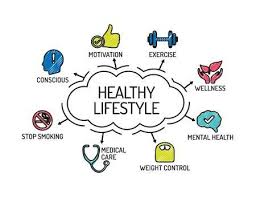Introduction
SAP Evaluation can be categorized into three main types. Prevention strategies focus on keeping individuals from engaging in substance abuse through education, awareness programs, and policy changes. Early intervention involves identifying and addressing substance abuse problems in their initial stages, often through screening and brief interventions. Treatment approaches encompass various methods, including counseling, therapy, and medication, with a focus on personalized care. Additionally, rehabilitation, recovery programs, and harm reduction strategies play crucial roles in assisting those affected by substance abuse, emphasizing minimizing harm and promoting healthier lives. Effective substance abuse intervention often combines elements from these three main types to address the unique needs of individuals and communities.
Definition of substance abuse and its impact on individuals and society.
Substance abuse refers to the consumption of alcohol, drugs, or other psychoactive substances. It can lead to substance dependence or addiction, affecting the user’s physical and mental health. The impact on individuals can include job loss, broken relationships, and serious health problems. Society also suffers, bearing increased healthcare costs, crime rates, and productivity loss. Understanding SAP is crucial for implementing effective prevention strategies and providing appropriate support to those affected.
Prevention Strategies
Prevention strategies aim to reduce the risk of substance abuse and its associated harms. They often fall into three categories: universal, selective, and indicated. Universal strategies target entire communities or populations, through campaigns promoting healthy behaviors or laws restricting access to substances. Selective strategies focus on specific groups at higher risk, such as adolescents or people with a family history of substance abuse.
Indicated strategies target individuals showing early signs of problematic substance abuse. Prevention can also involve education about the dangers of sap, training in life skills to resist peer pressure, and community initiatives to provide healthy recreational alternatives. Effectively implemented, these strategies can help prevent substance abuse disorders, improving individual lives and societal well-being.
Discuss proactive measures to prevent substance abuse.
Proactive measures to prevent substance abuse involve early education about the dangers of drug abuse. This includes teaching life skills, such as decision-making and stress management, to resist peer pressure. Community initiatives can offer healthy recreational alternatives, reducing idle times that might lead to substance experimentation. Policies restricting access to substances, like alcohol and tobacco, are also crucial. Additionally, targeted interventions for high-risk groups can nip potential issues in the bud. These measures, when implemented effectively, can significantly decrease substance abuse rates.
Highlight education, awareness programs, and policy changes.
Education and awareness programs play a pivotal role in preventing substance abuse. They equip individuals with knowledge about the harmful effects of drugs and alcohol, fostering informed decisions. Schools, community centers, and online platforms can provide these educational resources. Awareness campaigns also help debunk myths around substance abuse, promoting a realistic understanding. Policy changes, such as stricter regulations on substance sale and use, contribute to prevention efforts. These policies can limit access to substances, especially among youth, effectively reducing rates of abuse. Together, education, awareness, and policy changes form a comprehensive approach to SAP.

Early Intervention
Early intervention plays a crucial role in mitigating the impact of abuse disorders. It allows professionals to identify and address problematic behaviors before they escalate into full-blown addiction. Schools, healthcare providers, and community organizations often conduct screenings to detect early signs of substance misuse.
Once identified, individuals receive targeted interventions, such as counseling or therapy, to address their specific needs. These interventions equip them with coping mechanisms and skills to resist substance abuse. Family involvement can also enhance these efforts by providing a supportive environment for recovery. By taking swift action at the first signs of trouble, early intervention can prevent the devastating consequences of substance abuse disorders and pave the way for healthier, more fulfilling lives.
Explain the importance of identifying substance abuse problems early.
Identifying substance abuse problems early is vital in preventing addiction and related health issues. Early detection allows for immediate intervention, which can halt the progression of substance misuse. It gives individuals a better chance at successful recovery by addressing the issue before it becomes deeply entrenched. Early identification also reduces the risk of long-term physical and psychological damage associated with chronic substance abuse. Moreover, it can prevent the social and economic consequences of addiction, including broken relationships, job loss, and financial instability. Therefore, recognizing and addressing substance abuse problems early is a crucial step toward healthier lives and communities.
Discuss screening, brief interventions, and referrals to treatment (SBIRT).
Screening, Brief Interventions, and Referrals to Treatment (SBIRT) is an effective strategy in managing substance abuse disorders. Screening quickly assesses the severity of substance abuse and identifies the appropriate level of treatment. Brief interventions examine substance abuse patterns and motivate individuals toward positive behavioral changes. Referrals to treatment provide those at risk with access to specialized care. Implementing SBIRT in healthcare settings can prevent serious consequences of substance misuse, promote healthier behaviors, and ensure that individuals receive the necessary care promptly. This comprehensive approach significantly improves the likelihood of successful recovery.
Treatment Approaches
Treatment approaches for substance abuse disorders vary based on the individual’s specific needs and circumstances. Detoxification is often the first step, helping to cleanse the body of harmful substances. Following detoxification, behavioral therapies are integral to treatment. They equip individuals with the skills to resist drug use, replace drug-using activities with constructive ones, improve problem-solving abilities, and handle stress and triggers more effectively (DOT SAP Program).
Medication-assisted treatment can also be beneficial, particularly for opioids, alcohol, and nicotine addiction. Additionally, peer support groups provide a sense of community and shared understanding that can bolster recovery efforts. Finally, follow-up care and monitoring are crucial to prevent relapse. By using a combination of these approaches tailored to the individual’s needs, treatment can effectively address substance abuse disorders and pave the way for lasting recovery.
Detail the various treatment methods such as counseling, therapy, and medication.
Various treatment methods play a crucial role in managing substance abuse disorders. Counseling involves one-on-one or group discussions that aim to address the root causes of addiction and develop healthier coping mechanisms. Therapy, such as cognitive-behavioral therapy, helps individuals understand their behaviors and feelings related to substance abuse, empowering them to make positive changes. Medication can be used to manage withdrawal symptoms, reduce cravings, and treat co-occurring mental health conditions. It’s important to note that effective treatment usually combines these methods, tailored to the individual’s specific needs and circumstances, for the best chance at recovery.
Emphasize the importance of tailored approaches.
Tailored approaches are pivotal in substance abuse disorder treatment. Since addiction impacts individuals differently, a one-size-fits-all approach is often ineffective. A tailored treatment plan considers the individual’s unique circumstances, including their type of addiction, severity of dependence, mental health conditions, and personal history. These plans may incorporate various therapies, medications, and support services as needed. By customizing treatment to the individual’s specific needs, healthcare providers can increase engagement, enhance the effectiveness of interventions, and significantly improve the chances of long-term recovery. This personalized approach ensures that each individual receives the most appropriate and effective care.
Rehabilitation and Recovery
Rehabilitation and recovery are critical stages in the journey to overcome substance abuse disorders. Rehabilitation involves a structured program of therapy, education, and support to help individuals stop using drugs or alcohol and start rebuilding their lives. It often includes detoxification, counseling, medication-assisted treatment, and skills training to manage cravings and prevent relapse. Recovery, on the other hand, is a lifelong commitment to sobriety and positive change. It goes beyond abstinence from substances; it also means restoring physical health, improving mental well-being, mending relationships, and reintegrating into society.
Support groups, ongoing therapy, and lifestyle changes often play a significant role in maintaining recovery. Both rehabilitation and recovery require dedication, resilience, and a supportive network. With the right approach and resources, individuals can successfully navigate these stages and lead fulfilling, substance-free lives. It’s important to remember that each person’s path to recovery is unique and should be respected as such.
Discuss inpatient and outpatient rehabilitation programs.
Inpatient and outpatient rehabilitation programs offer different levels of care for individuals struggling with substance abuse disorders. Inpatient programs require individuals to live at the treatment facility, providing round-the-clock medical and emotional support. They offer intensive therapy, and group counseling, and often include detoxification services. Outpatient programs, on the other hand, allow individuals to live at home while attending treatment sessions at a clinic or center. These programs may include individual counseling, group therapy, and medication-assisted treatment. Both types of programs focus on helping individuals develop the skills necessary for long-term recovery. The choice between inpatient and outpatient care depends on the individual’s unique needs, including the severity of their addiction, their physical health, and their responsibilities.
Highlight the role of support groups and aftercare.
Support groups and aftercare play a crucial role in sustaining recovery from substance abuse disorders. Support groups, such as Alcoholics Anonymous or Narcotics Anonymous, provide a community of individuals who understand the challenges of addiction, offering mutual encouragement and sharing coping strategies. Aftercare programs, including ongoing therapy and check-ins, help individuals navigate life post-treatment, addressing any issues that may trigger relapse. Together, support groups and aftercare services foster a supportive environment critical for maintaining long-term sobriety and well-being.

Harm Reduction
Harm reduction is a public health strategy designed to lessen the negative social and/or physical consequences associated with various human behaviors, such as substance abuse. It acknowledges that completely stopping risky behavior may not be realistic for everyone and instead focuses on minimizing harm. For instance, needle exchange programs aim to reduce the spread of infectious diseases among individuals who inject drugs.
Similarly, overdose prevention sites provide a safe space for drug use under the supervision of medical professionals who can intervene in case of an overdose. Harm reduction also involves offering education about safer drug use, advocating for policy changes to decriminalize certain behaviors, and providing access to treatment and support services. By meeting people where they are, harm reduction strategies respect individual autonomy and promote healthier, safer communities.
Explain the harm reduction approach to minimize the negative consequences of substance abuse.
The harm reduction approach to substance abuse prioritizes minimizing the negative consequences rather than eliminating use. It recognizes that some individuals may not be ready or able to stop using substances completely. Strategies include providing clean needles to prevent the spread of diseases, offering overdose prevention education, and developing safe consumption spaces. This approach also encourages access to therapy and treatment options. By focusing on health and safety, harm reduction acknowledges individual realities and promotes dignity and respect.
Mention needle exchange programs and safe consumption sites.
Needle exchange programs and safe consumption sites are vital components of harm reduction strategies. Needle exchange programs distribute clean syringes to individuals who inject drugs, reducing the spread of infectious diseases like HIV and Hepatitis C. Safe consumption sites, on the other hand, provide a controlled environment for substance abuse under medical supervision, preventing overdoses and providing immediate access to treatment. Both initiatives prioritize public health, aiming to minimize the harm associated with substance abuse while respecting individual autonomy.
Conclusion
it’s essential to underscore the effectiveness and humanity inherent in harm reduction strategies. These approaches actively address the public health crisis of substance abuse, focusing on reducing harm rather than enforcing unrealistic expectations of total abstinence. Key initiatives such as needle exchange programs and safe consumption sites have proven to decrease the spread of infectious diseases and prevent fatal overdoses. These strategies respect each individual’s journey, offering support rather than judgment. Harm reduction methods also promote education and access to treatment, further aiding individuals struggling with substance abuse. Ultimately, these inclusive and compassionate strategies foster healthier communities and respect for human rights, marking a significant step forward in our response to substance abuse.
Summarize the three main intervention types.
The three main intervention types are direct, indirect, and forcible. Direct interventions involve confronting the individual about their problematic behavior, often with a prepared statement detailing how it affects others. Indirect interventions utilize a professional to guide family and friends in constructive conversations about the issue. Forcible interventions, usually the last resort, involve legal or medical authorities to enforce a behavior change. Each type aims to help individuals recognize and address their harmful actions.
Stress the importance of a holistic and individualized approach to addressing substance abuse.
A holistic and individualized approach is vital in addressing substance abuse. It recognizes that substance abuse is influenced by various factors, including physical health, mental well-being, and social environment. This approach tailors treatment to each person’s unique needs and circumstances, enhancing its effectiveness. It considers all aspects of an individual’s life, promoting overall wellness rather than focusing solely on eliminating SAP Evaluation Near Me. Ultimately, this comprehensive, personalized strategy fosters sustainable recovery and improved quality of life.



